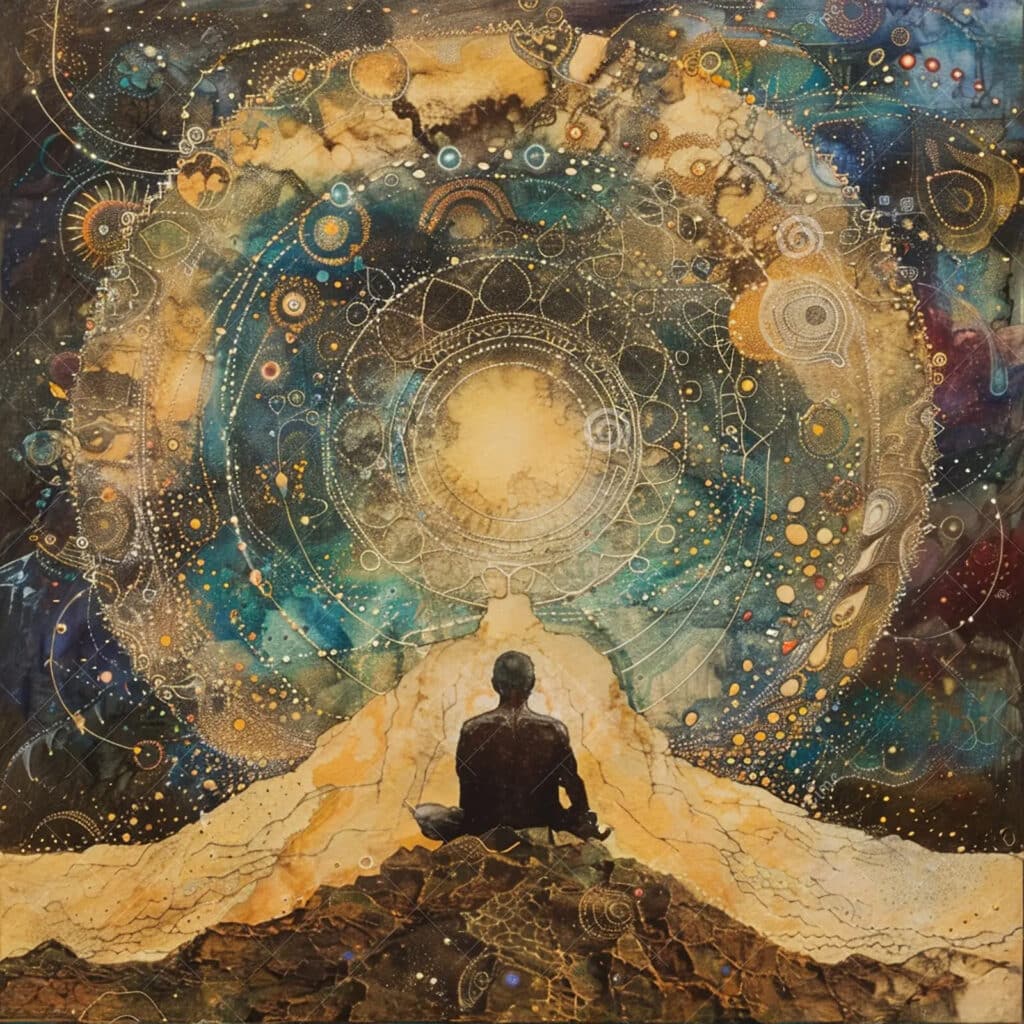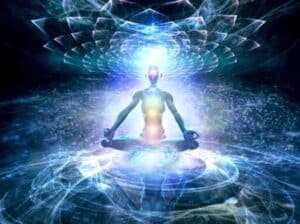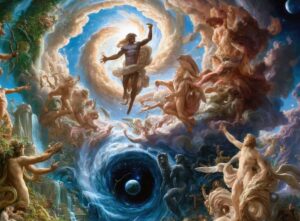
Zenfully Quool Quotes – Jackson Peterson
What appears as a human life—thinking, acting, choosing, feeling—is not being done by anyone. It is the activity of nature itself: the spontaneous functioning of a field of forces, appearing as the brain-body system, composed of billions of neurons, shaped by DNA, memory, perception, and environment. Each moment of experience is a temporary configuration of this natural field, like the shifting of weather.
There is no thinker behind the thought, no observer behind perception. What we call “mind†is not a separate entity hovering above the physical—it is the activity of the physical.

Thought is what matter is doing. Consciousness is what neurons in relationship are producing. The illusion that there is a “self†steering the body, experiencing the world, and choosing between options is itself part of the simulation generated by the brain. There is no one there.
This insight is not mystical, nor does it require belief. It is simply a clearer description of what is occurring—one in harmony with neuroscience, with early Buddhist insight, and with the philosophy of Baruch Spinoza, whose vision of God was not that of a supernatural being outside the world, but the world itself as divine. Advaita agrees.

Baruch Spinoza denied any separation between spirit and matter. What people call “God,†he said, is nothing other than nature (Deus sive Natura). The so-called laws of physics are not instructions imposed by a creator—they ARE the creator, in action. There is no dichotomy between the divine and the physical, because the divine IS the physical. Every motion, every change, every moment of thought or weather or unfolding life is God expressing itself as nature.
Einstein, when asked if he believed in God, said he believed in “Spinoza’s God, who reveals himself in the orderly harmony of what exists.†He was drawn to this view precisely because it eliminated the illusion of separateness—between God and world, between body and soul, between law and love.

In Spinoza’s vision, the physical is the sacred, and there is no need for supernatural realms to account for meaning, coherence, or awe.
From this perspective, the idea of a separate self is not just false—it is unnecessary. The body and brain do not need a self to function. Thoughts and decisions emerge not from a soul, but from the natural orchestration of biological processes, guided by evolution and encoded in neural architecture.
The “I†that seems to be thinking is part of what is thought. The experiencer is a representation within the experience.
This becomes clearer when considering how the brain operates. The brain is a predictive organ, continually modeling the environment and producing representations to guide behavior. Sometimes it misfires—mistaking a coiled rope for a snake, triggering fear, tension, and hormonal reactions. When conditions change (such as turning on a light), the brain corrects itself. The rope is seen, the threat dissolves, the fear evaporates.
No one decided to let go of the fear. The system simply updated its internal model.

Likewise, when the brain ceases to support the simulation of a self—because it is no longer necessary, no longer functional—the illusion dissolves. Not because someone realized something, but because the brain’s bio-computer auto-corrected, just like with the mistaken snake.
This correction is not spiritual in some otherworldly sense. It is entirely natural. It is what Spinoza would call an expression of
God’s nature as bio-chemical understanding—the internal coherence of the bio-computer’s natural process adjusting to itself.

Dreams offer a precise analogy. In the dream, there is a dream-self who runs from a tiger. But that self, that tiger, and that fear are all generated within the dream. There is no dreamer behind the dream. The self and the scene are co-generated phenomena. Upon waking, it becomes clear: nothing was “experienced†by anyone. There was just the temporary simulation of self and world.
Waking life is not fundamentally different. The sense of being someone who chooses, who thinks, who experiences, is just another layer of the projection—a representational mechanism for organizing experience, evolved for survival.
But there is no “I†inside the bio-machine.
There is only the machine, and the machine is not separate from the world. The brain is part of the body. The body is part of nature. And nature is not other than what people call divine.
The Buddha’s teaching of anattÄ—the absence of self—was never nihilism. It was clarity. He did not say there is nothing. He said: there is no one. No entity behind the activity. No controller within the mind. No soul inside the body. What exists is the arising of form, sensation, perception, mental formations, and consciousness—all dependently originating, all without owner. Like the weather.
There is no one who sees. Seeing arises.
There is no one who chooses. Conditions converge and action unfolds.
There is no one who lets go. The system ceases to simulate what no longer serves.

This is not philosophy as abstraction—it is the return to radical naturalism, the realization that all that is happening is nature—inside and out.
The weather outside is the functioning of atmospheric physics. The weather within—emotion, thought, sensation—is the functioning of a living body’s neurochemical field. Both are natural events, not personal ones. There is no self in the sky, and no self in the skull.
This is Spinoza’s vision. This is Einstein’s intuition.
This is the heart of the Buddha’s liberation.
There is no ghost. No agent. No immaterial soul or spirit.
No doer. No experiencer. No observer.
There is only the Field or Nature.
And the field is divine—not because it was made by something else,
but because it IS everything.
God is not something watching nature.
God is what nature is doing.
The sacred is not elsewhere—it is what is happening, now, as this:
…this breathing, this seeing, this passing cloud of thought.
Not mine. Not yours. Not anyone’s.
The Universe is Divinity Incarnate!





